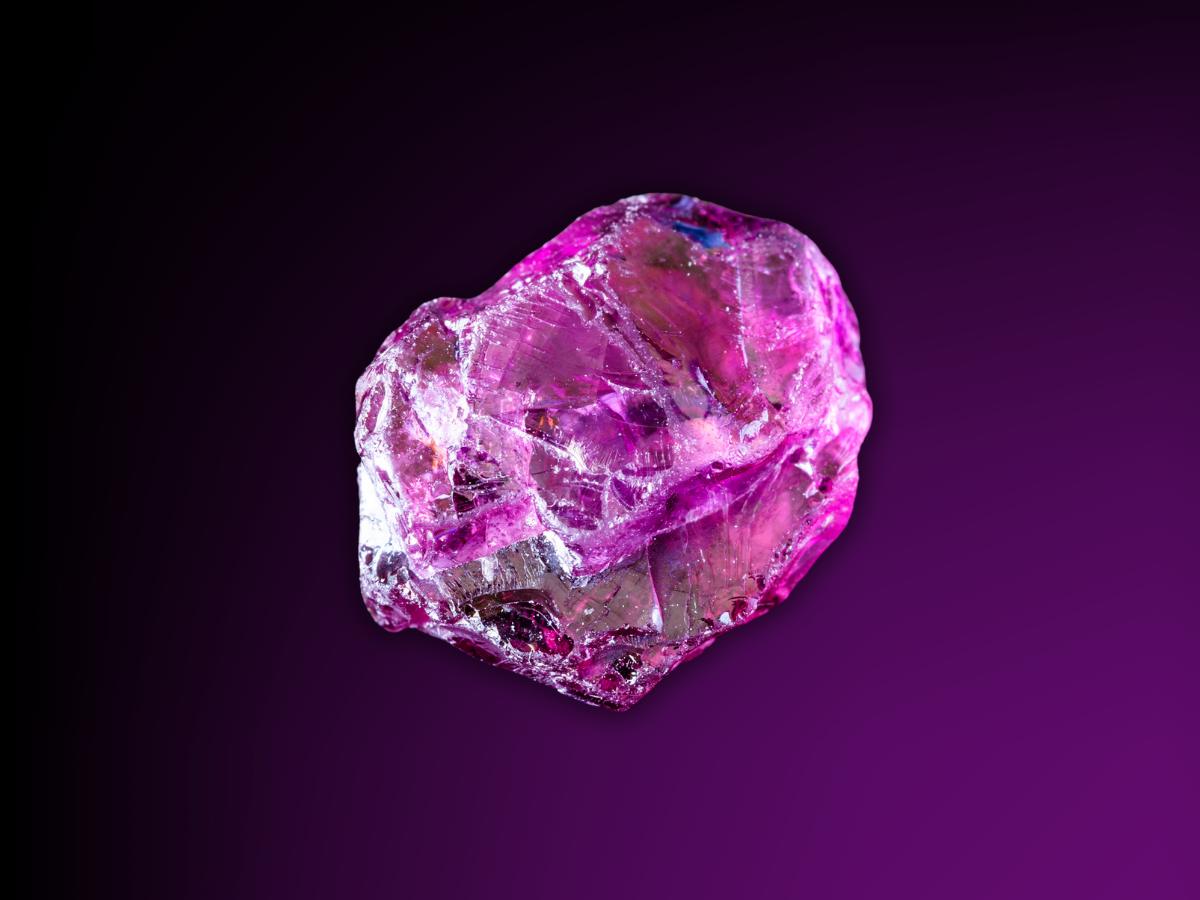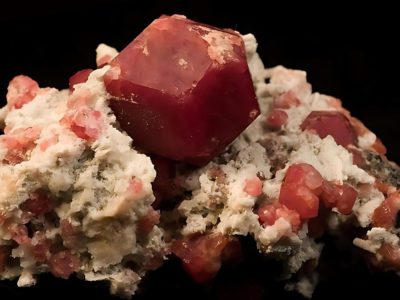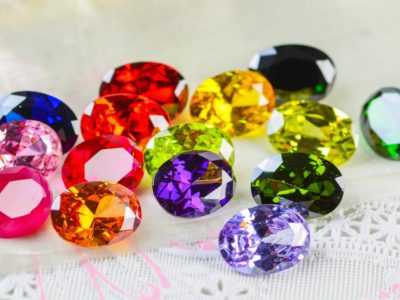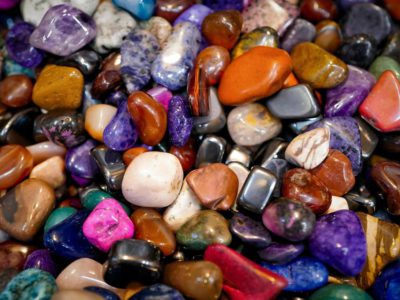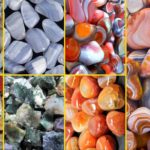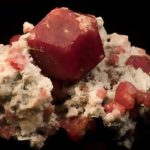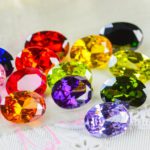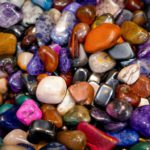A type of garnet known as rhodolite garnet is one of a series of closely related minerals that differ in composition but have a similar crystal structure. Specifically, rhodolite is a kind of garnet that is a part of the pyrope-almandine series. It is valuable for having a beautiful pinkish-red to purplish-red color that is sometimes compared to cranberry or raspberry. Another notable member of the garnet family is the grossular garnet, which is prized for its range of colors, including green, yellow, and orange.
Whilst considered to be less valuable in contrast to precious gems like diamonds, rubies, and sapphires, over the years garnets have developed a reputation for their beautiful colours and relatively high level of durability: with a Mohs hardness of 6.5 to 7.5. Although there is a temptation to confuse the rhodolite garnets with the dark red colored varieties of these gemstones, especially almandine garnet which features deep richer, and deeper reddish tinges. However, the rhodolite variant of garnets with their lighter hues, distinguished by their fruity colour tones: have their distinctive niche market with quite many tones, sometimes accompanied by the purplish ones.
Table of Contents
History of Rhodolite Garnets
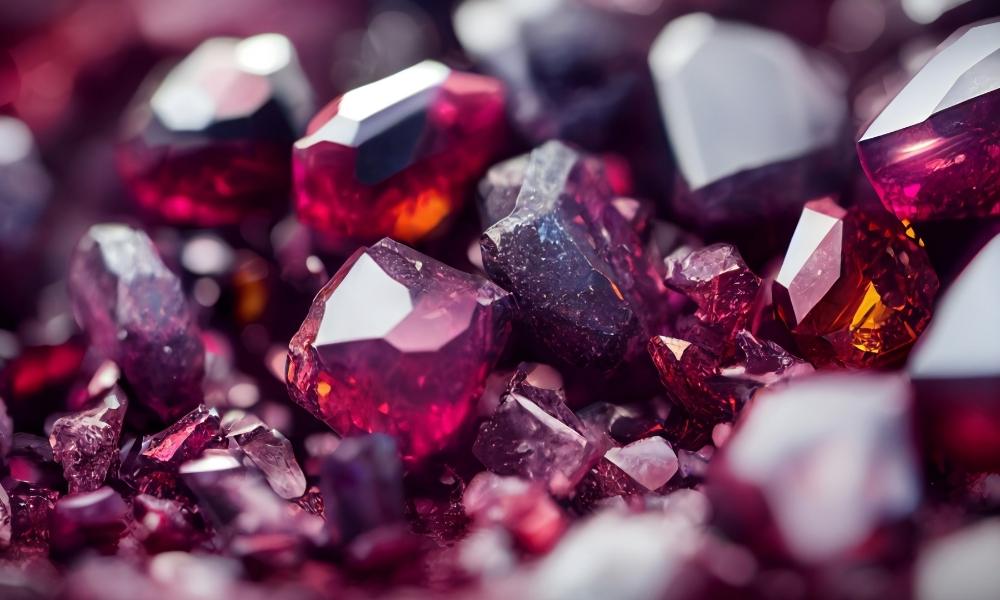
Although garnets have existed for millenniums due to their popularity, especially in the ancient Egyptian, Roman, and Greek cultures. This particular kind of garnets came along only much later on. The meaning of the name is a good beginning to understanding where the rhodolite garnet came from. These gem stones are usually associated with the American State of Rhode Island. One of the Rhode Island mineralogists by the name William Earl Hidden sometime in the 1890s found rhodolite, a gem-rich Cowee Valley in North Carolina.
While America is not similar, new deposits were located in the areas as geographically distant countries such as Brazil and Mozambique, the United States, or even Greenland due to the recent emergence of popularity and subsequently demand for garnets, especially in this rose-purplish red variety. But maybe the most exquisite variation of these diamonds comes from countries like Tanzania and Sri Lanka, which are famous for having an abundance of gems.
Colors of Rhodolite Garnet
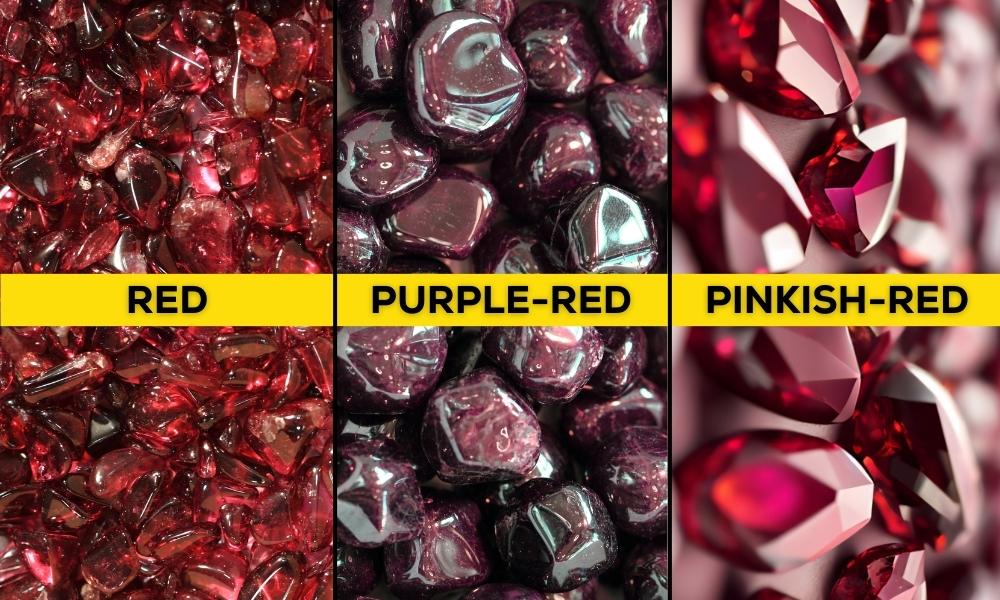
People distinguish Rhodolite garnet by its unique hue, which ranges from pinkish-red to purplish-red. Individual stones may display varying tones and hues of the same color. The primary hues connected to the gem stone are as follows:
Red
In essence, a rhodolite garnet is a red garnet. There is a warm, crimson tint that predominates. Some stones may have a more intense red tint than others, and the intensity of the red can vary.
Purple-Red
The name “rhodolite” comes from the Greek word “rhodon,” which means rose and indicates a purplish-red tint. The garnet’s distinctive appearance is attributed to the deep and rich purplish undertone that gives the red hue more depth. When you combine red and purple tones, the hue is frequently aesthetically attractive and vivid.
Pinkish-Red
Rhodolite garnets can occasionally have a crimson undertone but tilt more toward the pink end of the spectrum. The hue variety enhances the gemstone’s appeal and adaptability.
Composition of Rhodolite Garnet
One type of garnet that is a member of the pyrope-almandine series is rhodolite garnet. Within the garnet group, a solid solution between the pyrope and almandine end-members makes up this stone. A range of compositions between the pure pyrope (Mg3Al2(SiO4)3) and pure almandine (Fe3Al2(SiO4)3) end-members is represented by the pyrope-almandine series.
The following represents the general chemical formula for garnet:
X3Y2(SiO4)3
Within this formula:
- Calcium (Ca), magnesium (Mg), manganese (Mn2+), ferrous iron (Fe2+), and aluminum (Al) combine to form X.
- Y can be any combination of ferric iron (Fe3+), chromium (Cr3+), or aluminum (Al).
The color of the rhodolite garnet gemstone comes from Manganese (Mn), which gives its purplish or pinkish-red hue. The composition of the garnet may also differ slightly, and some other trace elements might affect the color as well as some other features. Gemological laboratories employ many sophisticated methods to determine the specific formula of the gemstones, revealing the mineral constitution.
Occurrence of Rhodolite Garnet
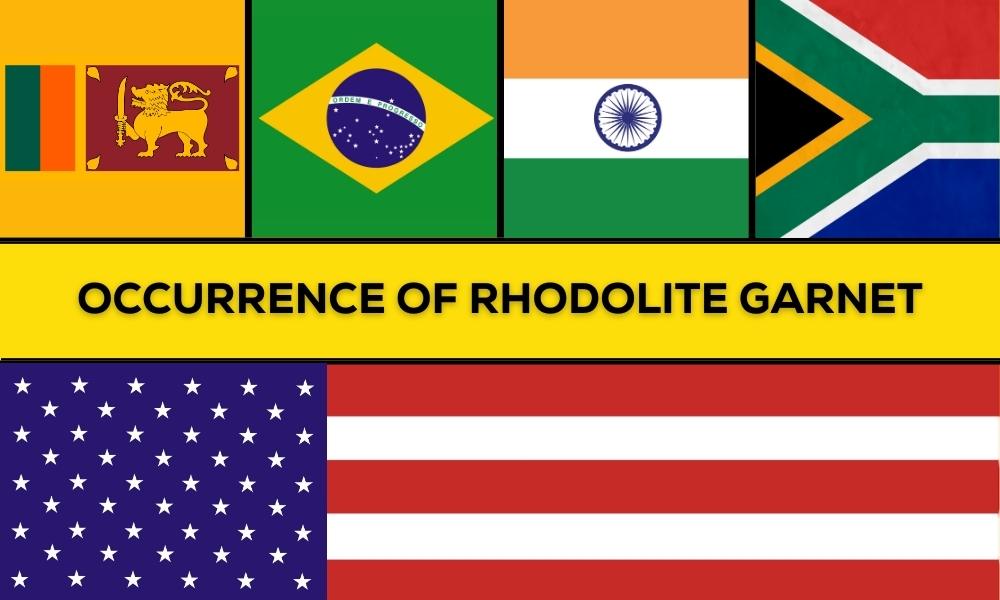
Garnet is mined from both primary deposits and alluvial sources, and it can be found in many different places on the planet. The following are some noteworthy instances of the garnet:
Sri Lanka
One important source of rhodolite garnet is Sri Lanka. The gemstone is all around the nation, and rhodolites from Sri Lanka are highly valuable for their excellent quality and eye-catching hues.
Brazil
Another significant producer of rhodolite garnet is Brazil. The gemstone originates in the state of Minas Gerais in Brazil. Brazilian rhodolites are famous for their vivid and intense hues.
India
There are garnet deposits in India as well. Particularly in Rajasthan, rhodolite garnets of all hues and sizes are in large production.
Africa
Several African nations have Rose quartz. Particularly Tanzania and Mozambique have produced significant amounts of rhodolites.
United States
Rhodolite garnet is there in the United States, particularly in North Carolina. Sometimes, riverbed alluvial sediments include the gemstone.
It is important to note that the country of origin affects the garnet’s color and quality. This is because gemstones from different places may have slight variations in color, saturation, and other aspects. Buying from reliable suppliers and obtaining certification are some of the ways through which the garnet can be confirmed. Certificates prepared by the gemological laboratories reveal the true origin and nature of a diamond.
Cut and Shapes of Rhodolite Garnet
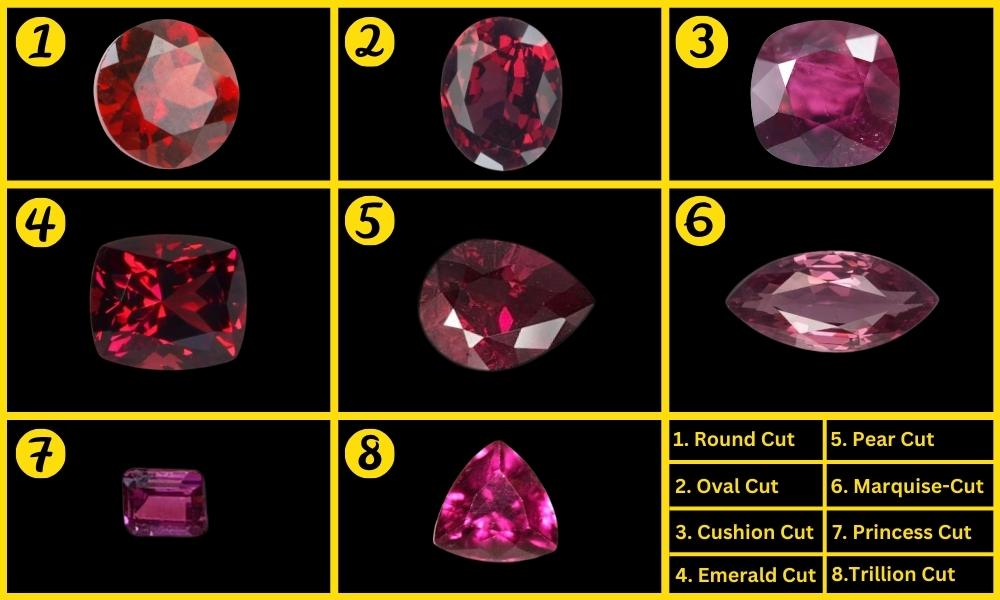
A flexible gemstone, the garnet can be cut into a variety of forms to accentuate its brilliance and elegance. Rhodolite garnet is often cut and shaped as follows:
Round Cut
A timeless and well-liked option for garnet is the round cut. This design, which is popular in pendants, earrings, and rings, optimizes the brilliance of the gemstone.
Oval Cut
Rhodolite garnet’s vivid hue is complemented by the oval cut’s graceful, extended shape. People frequently utilize it in pendants and rings.
Cushion Cut
The cushion cut’s square or rectangular form, rounded corners, and brilliant appearance combine to create a look that is both aged and brilliant. People often utilize cushion-cut rhodolite garnets in a variety of jewelry designs.
Emerald Cut
The rectangular form of the emerald cut has squared corners. Although emeralds are more frequently linked with this cut, garnet can also benefit from it, as it offers a classy and classic appearance.
Pear Cut
The pear cut, sometimes referred to as the teardrop or drop cut, combines the features of the marquise and round shapes. It frequently gives earrings and pendants a distinctive and sophisticated appearance.
Marquise-Cut
The marquise cut is a long shape with ends that are pointy. The garnet might seem larger and more elongated with this cut, improving its look.
Princess Cut
A princess cut is a square or rectangular shape that has sharp edges. This cut is famous for its contemporary, geometric look, and it can work well with the garnet.
Trillion Cut
The trillion cut is a unique shape that accentuates Rhodolite garnet’s brilliance. People frequently utilize it in earrings and rings.
Jewelry use of Rhodolite Garnet
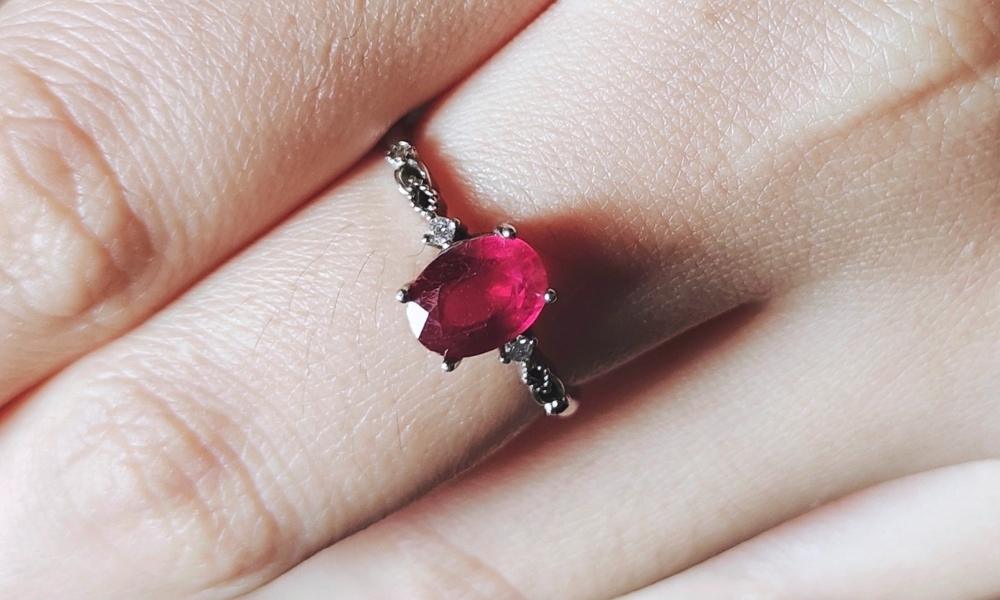
The garnet is a popular gemstone because of its vivid color, high hardness, and adaptability in jewelry. Here are some typical applications for the garnet in jewelry:
Rings
In rings, rhodolite garnet is commonly used as an accent stone as well as a central stone. It can be set in several ring designs, such as halo, three-stone, and solitaire bands.
Earrings
Rhodolite garnet earrings are a well-liked option, available in stud, drop, or hoop forms. The appealing hue of the diamond lends sophistication to both business and formal outfits.
Necklaces and Pendants
People frequently use Rhodolite garnet as a focus stone alone or in combination with other gemstones in necklaces and pendants. The diamond is a beautiful option for pendant designs because of its warm hues.
Bracelets
Whether they are charm bracelets or tennis bracelet designs, rhodolite garnet bracelets are a chic choice. Because of its resilience, the gem can tolerate the strain of regular use.
Brooches
Use the garnet in brooches and pins to spruce up your outfit with a splash of color. Because of its adaptability, the gem comes in a variety of design themes.
Jewelry Sets
A coordinated and refined appearance can be achieved by wearing sets of matching rhodolite garnet jewelry, such as earrings, a necklace, and a bracelet.
Birthstone Jewelry
Since rhodolite garnet is an alternate birthstone for January, jewelry with birthstones for January birthdays frequently features this stone.
Custom Jewelry
Jewelers and designers frequently use Rhodolite garnet to create one-of-a-kind, customized designs that satisfy specific tastes.
Taking Care of Rhodolite Garnet
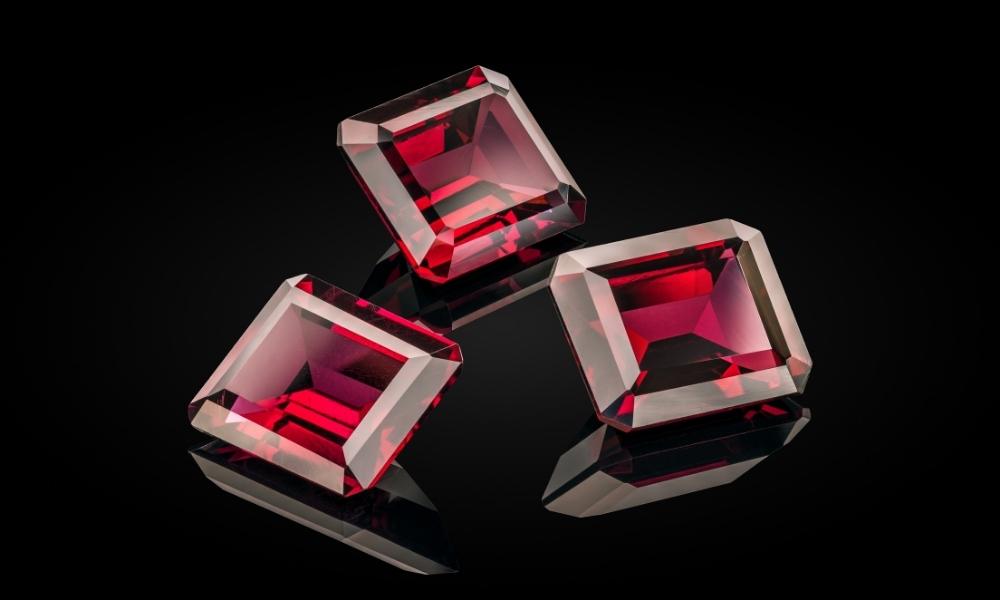
It’s crucial to adhere to certain care instructions to preserve the longevity and finest appearance of your rhodolite garnet jewelry:
Avoid Harsh Chemicals
Although rhodolite garnet is a somewhat durable gemstone, exposure to severe chemicals can harm it. Steer clear of chemicals like bleach, ammonia, and other home cleaners.
Avoid Extreme Temperatures
Rapid temperature fluctuations may cause damage to the garnet. It’s best to take off your jewelry before doing anything that involves intense heat or sudden temperature swings.
Store Separately
To avoid scratches, keep the garnet jewelry stored apart from other gemstones and metals while not in use. Consider using distinct bags or a jewelry box with compartments.
Clean Gently
Jewelry made with rhodolite garnet can be cleaned with a little soap and warm water. Scrub away grime with a toothbrush or other soft brush. Use a soft, lint-free cloth to gently pat dry after giving it a thorough rinsing. Avert steam and ultrasonic cleaners.
Avoid Ultrasonic and Steam Cleaners
Although rhodolite garnet can usually withstand steam and ultrasonic cleaning, it’s best to be cautious. The gemstone may be particularly vulnerable to damage from these cleaning techniques if it has certain inclusions or treatments.
Remove During Activities
Before participating in activities that could potentially damage your rhodolite garnet jewelry, such as gardening, sports, or severe physical labor, take off your jewelry.
Professional Cleaning
Get your rhodolite garnet jewelry inspected and cleaned by a trustworthy jeweler regularly. This makes it possible to check the gemstone and the setting in detail to make sure everything is in working order.
Refrain from Harsh Impact
Even though garnets are generally strong, severe impact can still cause them to crack or break. Be cautious not to bang your jewelry on harsh surfaces.
(FAQs) about Rhodolite Garnet
Q1. Is rhodolite more expensive than a garnet?
Rhodolite is an expensive kind of garnet; a 1-carat stone of heirloom quality starts at roughly $1,000. A quality one-carat garnet made of pyrope and almandine might cost you about $300.
Q2. What is the difference between a garnet and a rhodolite garnet?
One kind in the garnet family is rhodolite garnet. It stands out for its rose-to-violet colors, which occasionally even include a hint of crimson. Precious stones known for their color and reflectivity are garnets.
Q3. Is rhodolite a good stone?
Rhodolite has a 7–7.5 rating, indicating a high degree of durability. Wearing this stone in various settings and with other jewelry is something you should think about. However, just like any other gemstone, you must treat it with love and attention.
Q4. How do I identify a rhodolite garnet?
You can distinguish a genuine rhodolite from a fake one in a few ways. Rhodolite identification is mostly based on its distinct rose-pink color, which also helps distinguish it from red garnets. You can also use strong neodymium magnets to distinguish these stones.
Q5. Which is cheaper ruby or garnet?
The main distinctions between ruby and garnet, which are both precious stones, are that ruby is harder, has a deeper red color, and costs more overall.
Stay Tuned to Gems Tycoon for all gems-related articles.

